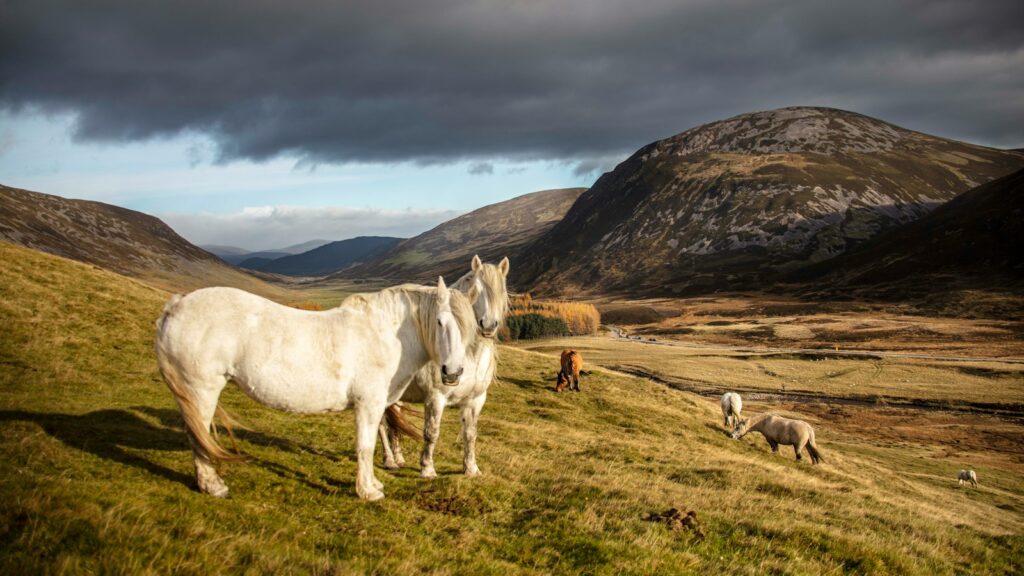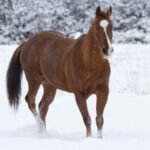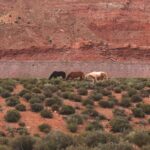In the realm where fantasy meets equestrian majesty, mythical mares have long captured our imagination. These extraordinary female horses transcend ordinary equines, embodying magical qualities, supernatural abilities, and connections to divine or otherworldly realms. Throughout mythology, literature, and cultural traditions worldwide, these magnificent creatures have served as companions to gods, heroes, and legendary figures. This article explores ten of the most exceptional royal steeds for mythical mares, delving into their origins, powers, and significance within their respective mythological contexts. From the swift-footed companions of deities to the fiery-maned protectors of ancient realms, these legendary equines have left indelible hoofprints across the landscape of human imagination.
Sleipnir: The Eight-Legged Wonder of Norse Mythology

While traditionally depicted as male, Sleipnir deserves mention as the archetypal mythical steed whose legendary qualities would be magnificent in any mare. Born to Loki (when he took female form as a mare) and the stallion Svaðilfari, Sleipnir possesses eight legs that symbolize ultimate speed and the ability to traverse between worlds. This extraordinary horse serves as Odin’s personal mount, galloping effortlessly across the rainbow bridge Bifröst and through the nine realms of Norse cosmology. Sleipnir’s unique appearance and supernatural abilities have made it one of the most recognizable mythical horses in world mythology, with its eight legs representing the ultimate in divine equine power. The gray-colored steed’s name translates to “slippy” or “the slipper,” referring to its unmatched speed and agility across different dimensional planes.
Epona’s Sacred White Mares
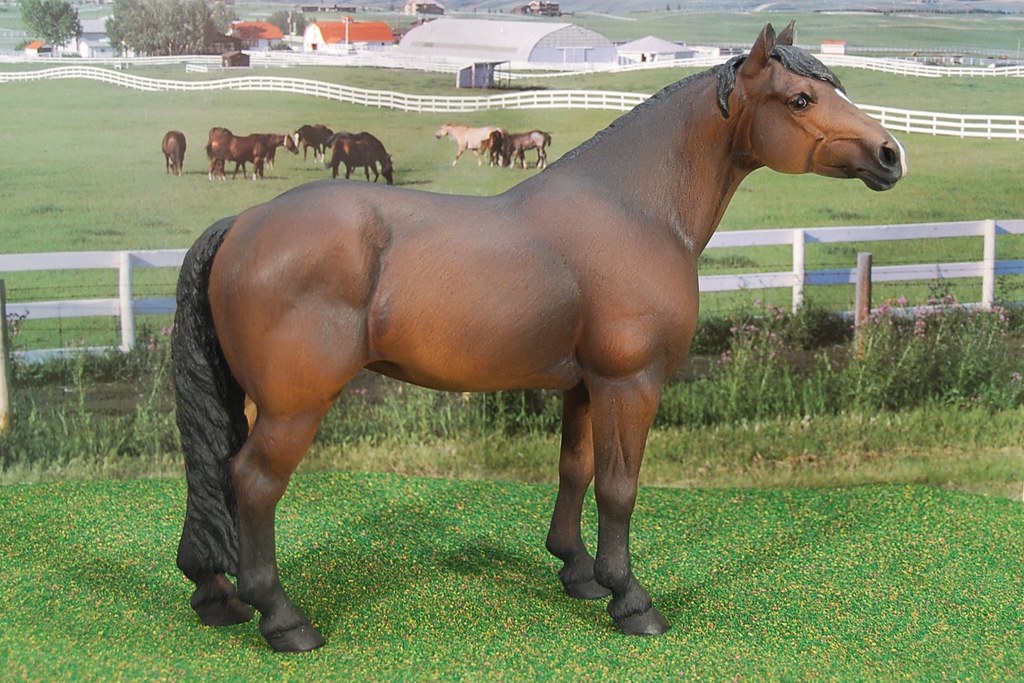
The Celtic goddess Epona, whose very name derives from the Gaulish word for “horse,” is frequently depicted riding a white mare or accompanied by multiple white mares that symbolize fertility, protection, and prosperity. These divine mares were considered sacred manifestations of the goddess herself, embodying her sovereignty over the equine realm and her connection to the cycles of life and death. Archaeological evidence throughout ancient Gaul and Roman-era Europe reveals numerous depictions of Epona with her white mares, underscoring their importance in Celtic religious practices and beliefs. The worship of Epona and her sacred mares transcended typical cultural boundaries, becoming one of the few Celtic deities officially recognized within the Roman Empire, where her festival was celebrated on December 18th. These mythical white mares were believed to carry souls between worlds, making them psychopomps with connections to both fertility cults and funerary traditions throughout Celtic territories
Al-Buraq: The Lightning Mare of Islamic Tradition
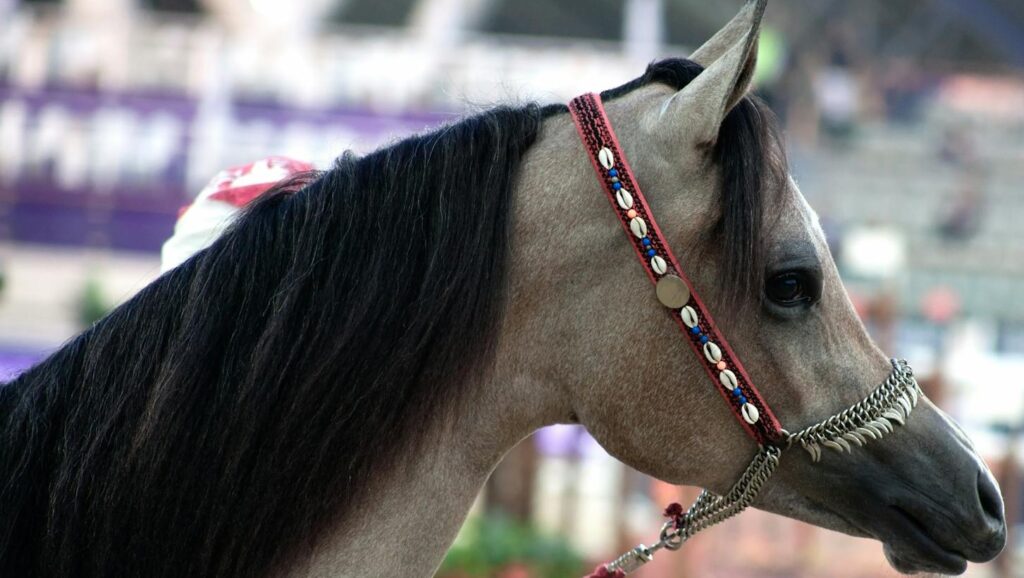
Al-Buraq, whose name means “lightning” in Arabic, is the magnificent white mare with wings who carried Prophet Muhammad during the Night Journey (Isra and Mi’raj) from Mecca to Jerusalem and then to the heavens. Though sometimes described with a woman’s face and a peacock’s tail, Al-Buraq’s fundamental nature as a divine mare represents the perfect union of earthly and celestial qualities in Islamic tradition. This extraordinary creature moved with supernatural speed, covering vast distances with each stride that reached as far as the eye could see. Islamic art throughout centuries has depicted Al-Buraq with varying features, but consistently emphasizes her radiant white color, symbolizing purity and divine light. As the chosen mount for the Prophet’s most significant spiritual journey, Al-Buraq represents the ultimate royal steed – one worthy of carrying a messenger of God through the seven heavens to the divine presence.
Xanthos and Balios: The Immortal Mares of Achilles
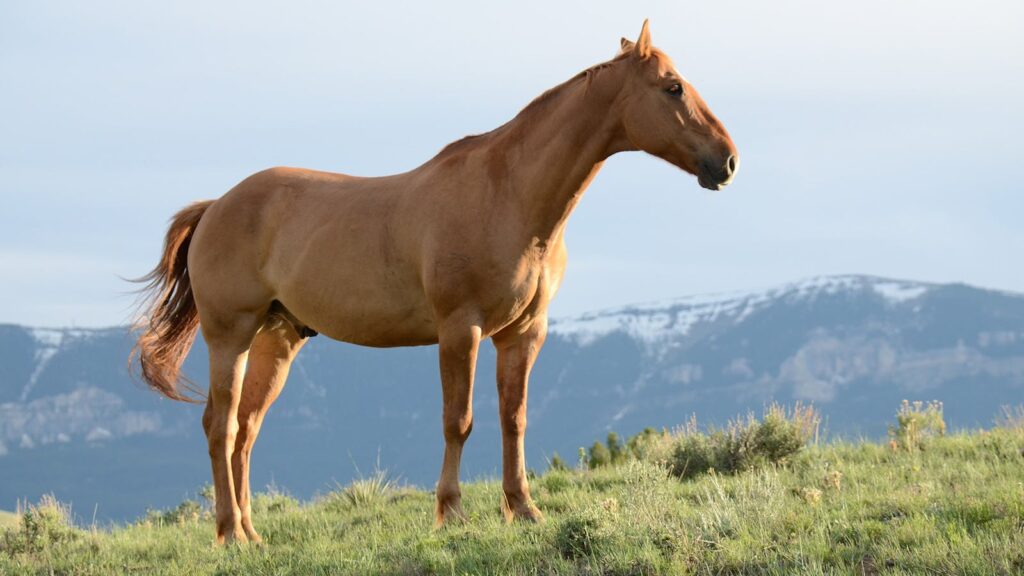
Though traditionally described as male in some translations, Homer’s Iliad presents Achilles’ immortal horses Xanthos (Blonde) and Balios (Dappled) as divine offspring of the harpy Podarge and the West Wind Zephyrus, making their gender representation variable across different interpretations. These extraordinary steeds were wedding gifts from the gods to Peleus, Achilles’ father, eventually becoming the famed warrior’s trusted companions during the Trojan War. Their supernatural speed made them unmatched on the battlefield, while their divine heritage granted them unique abilities, including the power of speech – as demonstrated when Xanthos prophesied Achilles’ impending death. The mares’ loyalty to Achilles was legendary, with accounts describing how they wept upon learning of Patroclus’ death, showing emotional depth uncommon among regular horses. As immortal beings, these divine equines represented the perfect blend of supernatural power and emotional intelligence, making them ideal royal steeds for any mythological setting.
Rhiannon’s White Mare: The Welsh Psychopomp
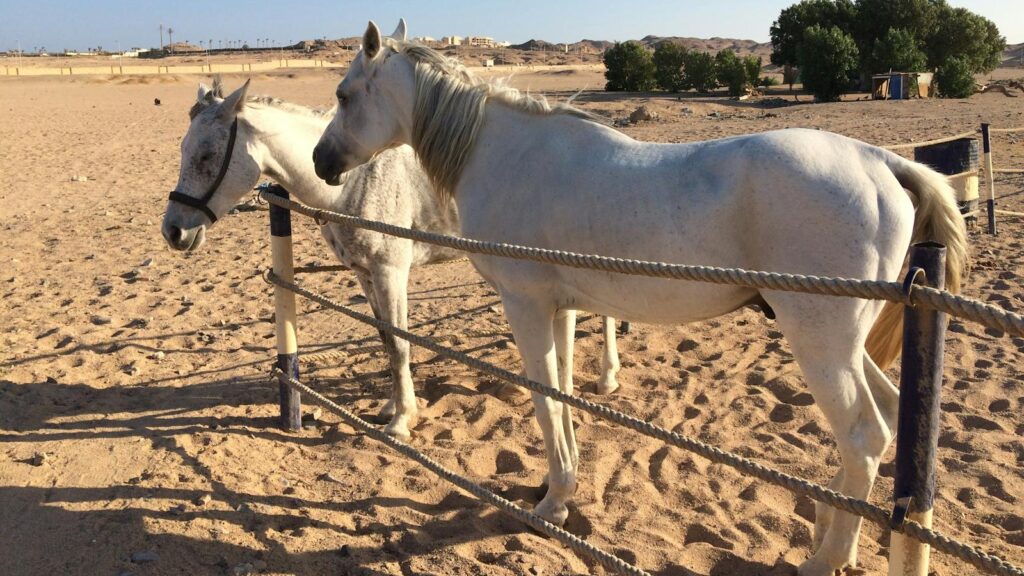
In Welsh mythology, the goddess Rhiannon appears riding a magnificent white mare that moves with supernatural grace and speed, seemingly always maintaining the same distance from those who pursue her. This otherworldly mare serves as both Rhiannon’s mount and as a manifestation of her divine nature, connecting her to sovereignty, fertility, and the Otherworld in Celtic belief systems. The mare’s pristine white color symbolizes purity and otherworldliness, while her impossible speed represents the unattainable aspects of divine beauty and power. In the Mabinogion tales, Rhiannon’s association with her ethereal white mare establishes her as a horse goddess with powers transcending mortal understanding, creating a powerful symbol that persists throughout Welsh folklore. Like other psychopomps in mythology, Rhiannon’s mare represents the journey between worlds, carrying souls to the afterlife and moving between the mortal realm and the Celtic Otherworld with supernatural ease.
The Mares of Diomedes: Legendary Flesh-Eaters

Among the most fearsome mythical mares are the four man-eating horses belonging to King Diomedes of Thrace, whose capture formed Heracles’ eighth labor in Greek mythology. These ferocious mares – named Podargos (Swift), Lampon (Shining), Xanthos (Yellow), and Deinos (Terrible) – were fed human flesh by their cruel master, making them savage and virtually untamable by anyone but Heracles himself. Their supernatural strength and bloodthirsty nature made them simultaneously terrifying and magnificent, representing the dangerous aspect of unbridled equine power. Legend holds that these mares breathed fire and were chained with iron restraints to prevent their escape, highlighting their untamable nature and supernatural qualities. After Heracles conquered them by feeding Diomedes to his own horses (thus satisfying their hunger and showing his dominance), he succeeded in taming these fearsome creatures – demonstrating that even the most terrifying mythical mares could be transformed into loyal royal steeds through proper heroic intervention.
Arion: The Blue-Maned Wonder
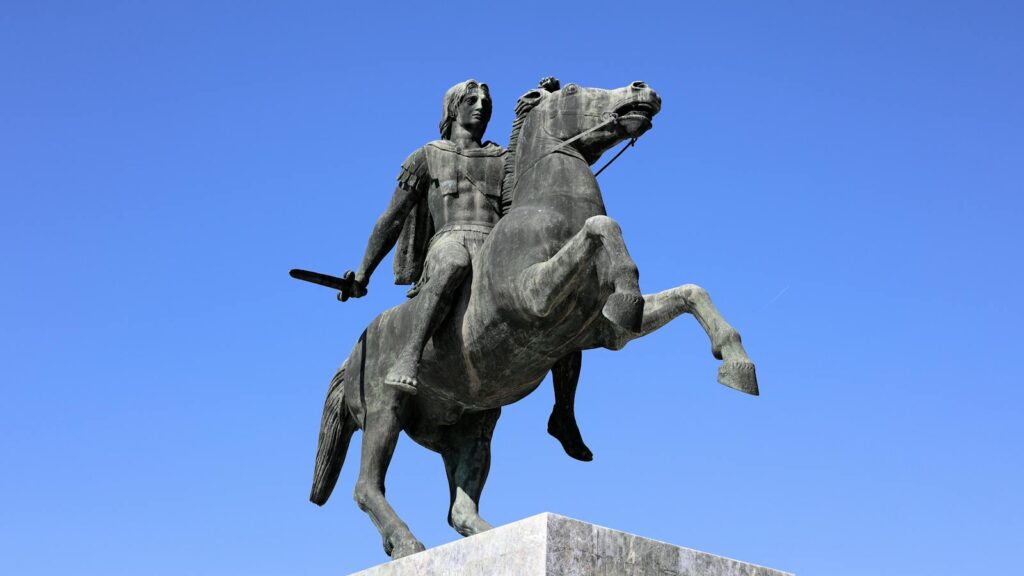
Arion stands among the most extraordinary mythical horses in Greek legend, born from the union of Poseidon and Demeter (when both took equine form) and frequently portrayed as either mare or stallion across different mythological accounts. With a distinctive blue mane and hooves that barely touched the ground, Arion possessed supernatural speed that made the divine horse unbeatable in any race. Various myths associate Arion with different heroes, including Heracles and Adrastus, the latter being saved when Arion carried him safely from the failed expedition against Thebes when all other leaders perished. Arion’s divine parentage granted unique abilities beyond mere speed, including the power of speech and prophetic knowledge passed down from the horse’s divine parents. The combination of unearthly beauty, divine heritage, and supernatural abilities makes Arion the quintessential royal steed, worthy of the greatest heroes and divine figures in mythology.
Kanthaka: Buddha’s Faithful White Mare
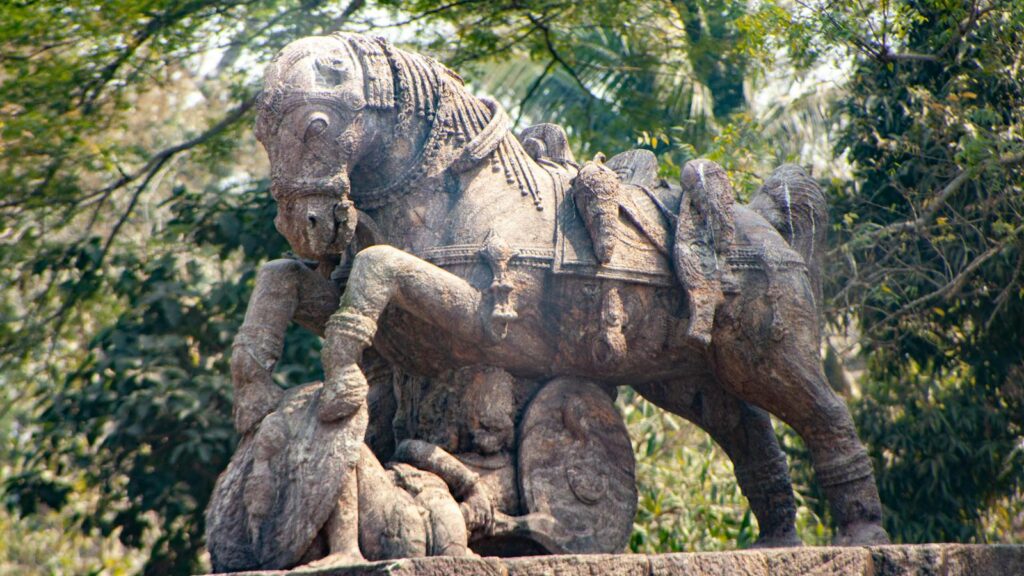
Though traditionally depicted as a stallion in many accounts, in some Buddhist traditions and artistic representations, Kanthaka, the royal horse who carried Prince Siddhartha (the future Buddha) during his Great Departure from palace life, appears as a magnificent white mare symbolizing purity and spiritual transformation. This loyal equine companion understood the profound significance of carrying the Bodhisattva away from worldly attachments, demonstrating supernatural awareness by muffling the sound of her hoofbeats during their nighttime escape. Standing 18 hands high (approximately 6 feet at the shoulder) according to traditional accounts, Kanthaka possessed extraordinary strength and endurance befitting a royal steed. Buddhist texts describe how Kanthaka died from grief after being separated from Siddhartha, highlighting the profound spiritual bond between the future Buddha and his devoted mount. As a mythical mare carrying one of history’s most influential spiritual figures toward enlightenment, Kanthaka represents the ideal combination of physical perfection and spiritual understanding.
Gringolet: The Shapeshifting Mare of Arthurian Legend
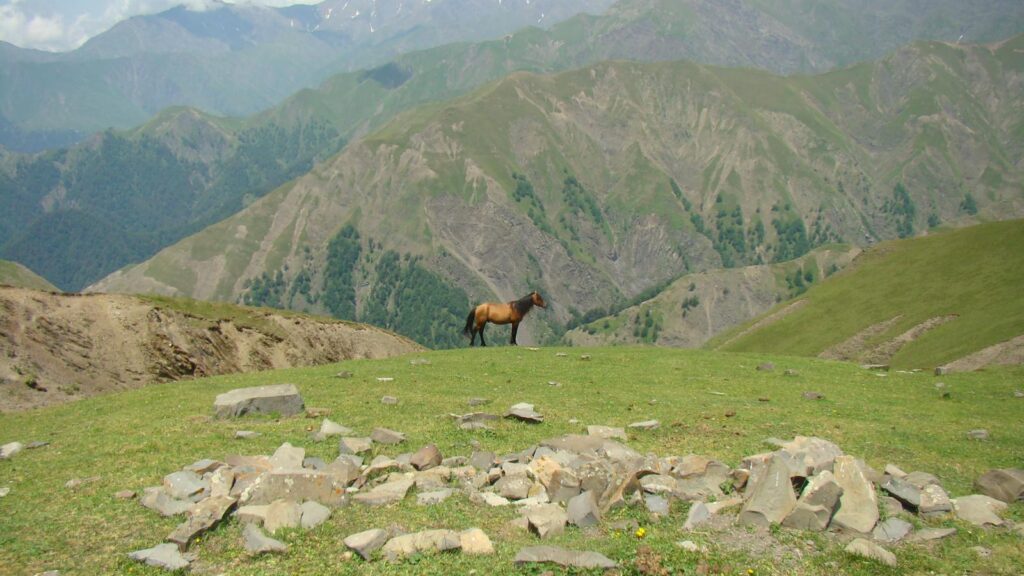
While often depicted as a stallion in modern retellings, in some earlier Arthurian traditions, Gringolet, the trusted mount of Sir Gawain, possessed shapeshifting abilities that allowed the horse to appear as either stallion or mare depending on the magical circumstances and challenges faced. This extraordinary steed demonstrated supernatural intelligence and loyalty, helping Gawain navigate enchanted forests, magical castles, and confrontations with otherworldly beings throughout his quests. Medieval texts describe Gringolet as possessing the unique ability to see through magical illusions, providing invaluable assistance during Gawain’s encounter with the Green Knight and other supernatural adversaries. The horse’s name derives from Old French terms suggesting “spotted” or “dappled,” though different manuscripts offer varying descriptions of its appearance, enhancing the mystical, changeable nature of this legendary mount. As a royal steed in Arthurian mythology, Gringolet represents the perfect combination of earthly reliability and magical capability, serving one of the greatest knights of the Round Table through countless adventures.
The Night Mares: Harbingers of Dreams and Nightmares
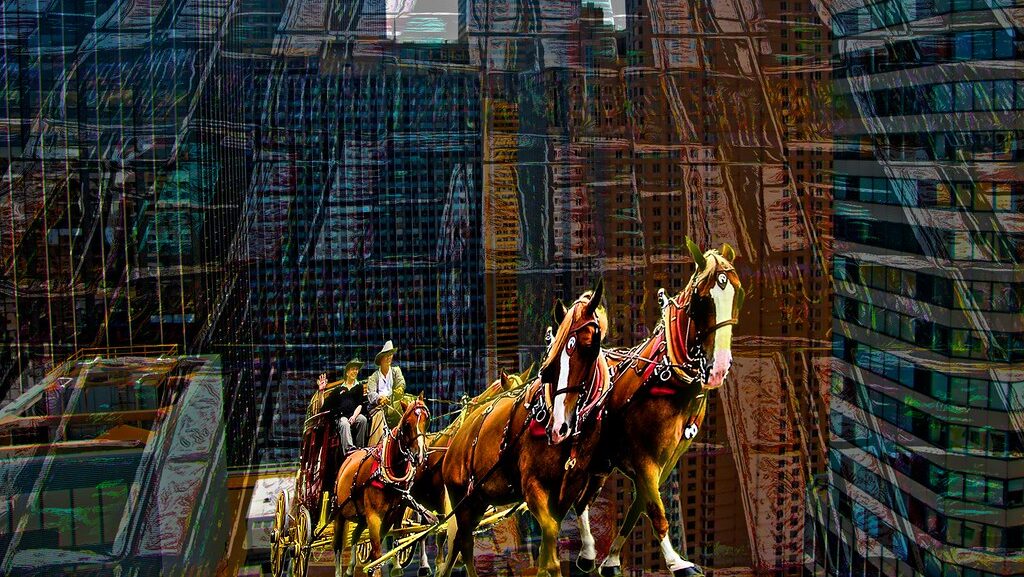
The etymology of the modern word “nightmare” traces directly back to the Germanic and Norse concept of the “night mare” – a female horse spirit that would ride upon the chests of sleepers, causing terrifying dreams, sleep paralysis, and shortness of breath. These supernatural equine beings occupied a unique position in folklore as both steeds and independent entities, capable of traversing the boundary between the conscious and unconscious realms. In Slavic mythology, particularly, these mare spirits were believed to be transformed witches who could squeeze through keyholes or any tiny opening to torment sleepers, demonstrating their liminal and shapeshifting nature. Medieval protective charms often specifically targeted night mares, with horseshoes above doors serving partially as wards against these equine spirits – a tradition that evolved into general good luck symbols over centuries. As mythological beings representing the power of dreams and the unconscious mind, night mares embody the darker aspects of equine mythology while maintaining their status as royal steeds of the dream realm.
Enbarr of the Flowing Mane: The Irish Sea Mare
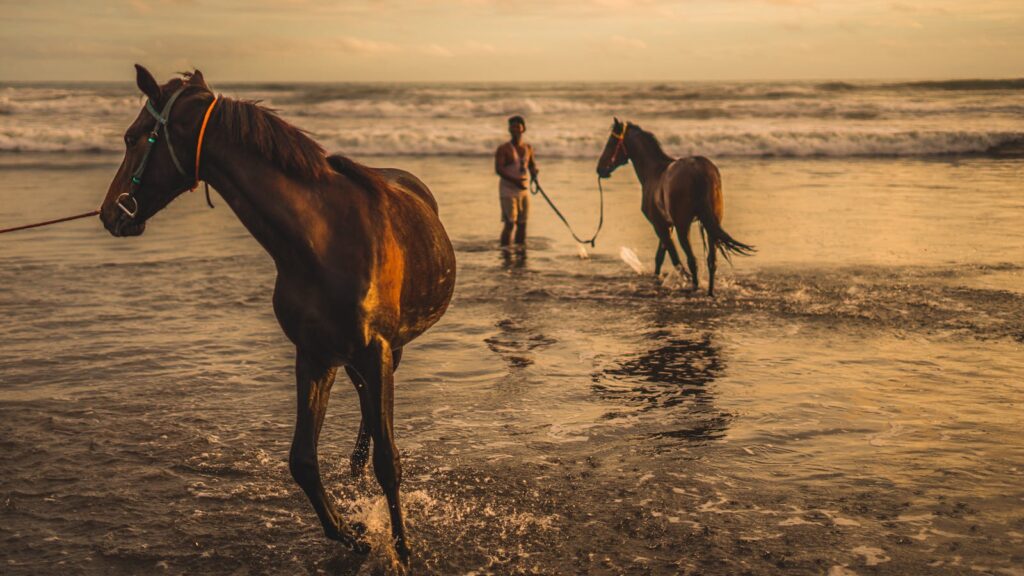
In Irish mythology, the goddess Macha owned the extraordinary mare Enbarr, whose name means “imagination” or “phantasy” and who possessed the unique ability to gallop across water as easily as land. This magnificent white mare with her flowing, water-like mane symbolized the connection between earthly and otherworldly realms in Celtic tradition, serving as the perfect royal steed for a goddess associated with sovereignty and territorial power. Legends describe how Enbarr’s mane resembled flowing waves, and how sea foam would appear at her hooves whether traversing ocean or land, emphasizing her connection to both watery and earthly domains. When the hero Lugh borrowed Enbarr for his battles, the mare demonstrated supernatural battle prowess, understanding complex tactical commands and protecting her rider with fierce loyalty and intelligence beyond mortal horses. The combination of ethereal beauty, supernatural abilities, and divine association makes Enbarr the quintessential royal steed for any mythical mare collection, representing the perfect union of natural and supernatural equine qualities.
Mythical Mares in Modern Imagination
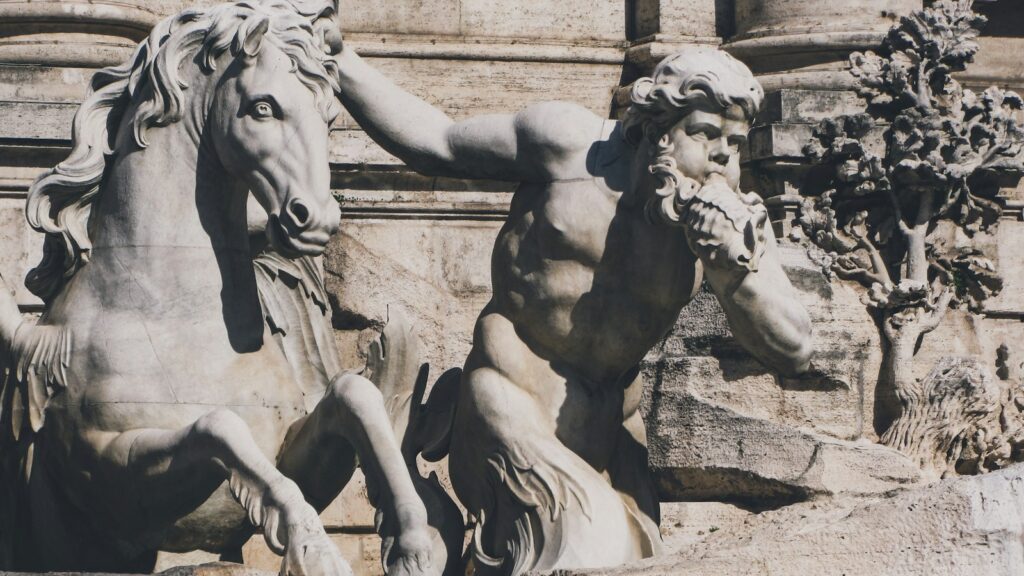
The tradition of mythical mares continues to evolve in contemporary fantasy literature, film, and gaming, where female equine characters often possess extraordinary abilities that echo their ancient counterparts. Modern interpretations frequently emphasize themes of freedom, feminine power, and the spiritual connection between humans and horses, reimagining ancient archetypes for contemporary audiences. Fantasy series like Mercedes Lackey’s Valdemar books feature magical horses called Companions – many of whom are mares – that choose their riders and possess telepathic abilities, showing clear inspiration from mythological traditions while adding modern psychological depth. Video game franchises such as The Legend of Zelda have introduced their own mythical mares, including manifestations of the horse goddess Malanya, who can revive fallen steeds and represents the divine feminine aspect of the equine spirit. The enduring popularity of these mythical mares across media demonstrates how deeply these archetypes resonate with the human imagination, continuing a storytelling tradition that stretches back to our earliest myths and legends.
Conclusion: The Enduring Legacy of Divine Equines

The ten royal steeds explored in this article represent only a fraction of the mythical mares that gallop through the world’s mythologies and legends. What unites these diverse equine figures is their transcendence of ordinary horse nature – each embodying supernatural qualities that make them worthy companions to gods, heroes, and legendary figures across cultural traditions. Whether serving as psychopomps between worlds, battle companions to legendary warriors, or manifestations of divine power, these mythical mares continue to capture human imagination through their combination of physical beauty, supernatural abilities, and profound symbolic resonance. The relationship between humans and horses has always carried mystical overtones, and these legendary mares represent the ultimate expression of that ancient bond. As we continue to tell stories of extraordinary steeds, these mythical mares remind us of the enduring power of the horse as a symbol of freedom, power, and the mysterious connection between human and animal worlds that has fascinated humanity since our earliest mythmaking beginnings.

